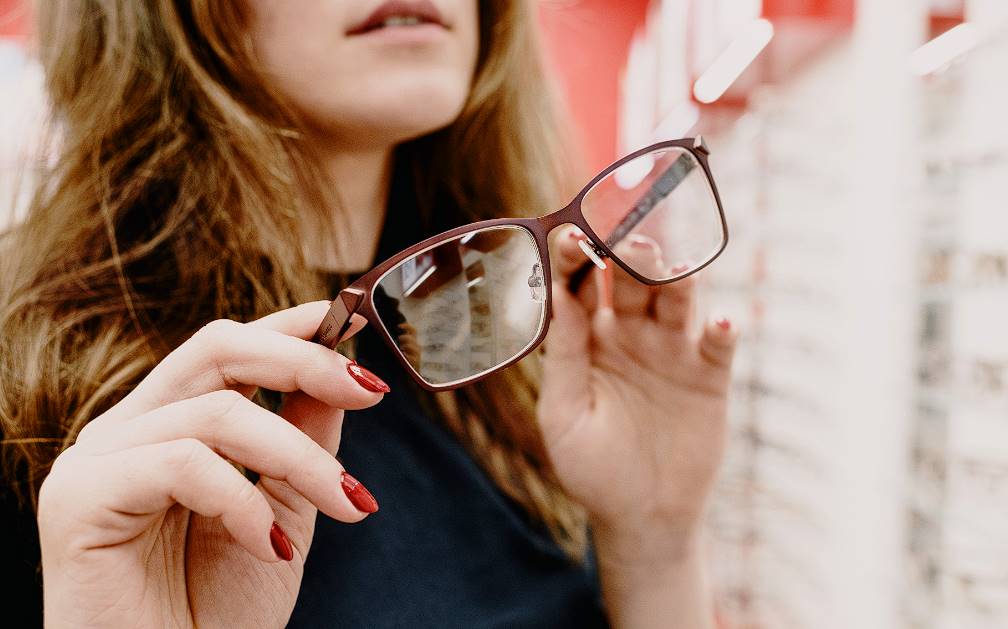If you're reading this, you're on the search for the ultimate pair of sunglasses to complement your upcoming summer ensembles and turn heads wherever you go. Furthermore, it will soften the outlines of your face and give you a gleaming grin. You can put the finishing touch on a stunning summer look with the perfect pair of sunglasses.
Try on a pair of sunglasses before buying them to ensure the frames don't pinch your temples or slide down your nose. In addition to making sure the lenses provide adequate protection from the sun, you should ensure that they are properly centred in front of your eyes.
But what if you're like the rest of us, and you can't seem to break out of your sunglass rut, despite knowing your face shape better than anyone else? Don't be nervous, pals! To kick off the summer in style, let's look at how to find the best pair of sunglasses to complement your face.
What Shape Is My Face?
Knowing your face shape is essential when shopping for sunglasses. It's the most important factor in determining whether a pair of glasses will complement your appearance. If the question of whether you're a rectangle or a square has never crossed your mind, there's no need to start worrying about it now.
How Can You Tell What Shape Your Face Is?
To simplify your life, we will tell you how to determine if you have an oval, round, or face shape. Some people use a measuring tape, but you only need a mirror and lipstick for this hack.
Pick up a pencil, lipstick, a bar of soap, or a washable marker. Hold a mirror at arm's length and take a look at yourself. Don't let your hand wander as you carefully trace your face's contours from chin to hairline on the mirror. Step back and observe the form that has been produced.
Since many of us have a mosaic of different face types, you can try this technique from a variety of perspectives.
Diamond Face Shape
A strong jawline and wide cheekbones characterise diamond faces. If you're looking for the perfect pair of sunglasses, don't be afraid to experiment with different shapes and styles. Wide cheekbones can be balanced with a more structured cut, while a rounder shape will help soften a pointed chin. Because of these qualities, men with diamond faces should consider purchasing a pair of D-frame sunglasses.
The largest feature of a diamond face is the cheekbones, while the jawline and forehead are narrow. Oval or rimless frames can complement wide or high cheekbones. Frames for diamond faces should have soft curves and not be wider than the wearer's cheekbones.
Oval Face Shape
The oval face shape is a desirable one. They're adaptable, working with a wide variety of sunglasses designs. Trying different kinds is the best way to zero in on a personal favourite. Larger frames will draw attention to your features, but frames with too-long arms will make your face look longer. Frames like aviators and D's are great for a modern look, while square frames make you look more put together.
Rectangle Face Shape
Sunglasses are a great way for men with square faces to soften their features and create visual harmony. If your face is rectangular, choose frames that stay within the top. Also, go for larger cuts so that your features aren't lost. You should wear round sunglasses or aviators but shorter aviator frames. Square frames will also do the trick; make sure they don't have any particularly sharp edges.
Oblong or rectangular faces are elongated and slim, with minimal angular features. Sunglasses that are too big look great on an elongated face. Sunglasses with thick frames and lenses, such as the wayfarer or rectangular shape, visually shorten a long face. Sunglasses with vintage-inspired frames, tall or deep lenses, sharp angles and bold lines are another option for softening the appearance of an oblong face. Whether you prefer wrap, square, shield, wayfarer, or rectangle frames, this set is sure to grab attention. People with long faces shouldn't wear narrow frames.
Triangle Face Shape
A triangular face has a wide chin and a narrower forehead and cheekbones. Sunglasses worn by men with this face shape should emphasise the top half to counteract the lower half. Using glasses of medium and large sizes will help you strike this equilibrium. Avoid dainty and understated choices; they won't draw enough focus on your eyes to counteract the rest of your outfit. You can soften your overall appearance by selecting frames in either a D or round shape.
Square Face Shape
Faces that are square have prominent cheekbones and jawlines. Round or aviator-shaped glasses, for example, work well with that defined look. Larger sunglasses are a good choice if you have strong features; otherwise, stick to smaller or medium sizes. Sunglasses with a D-frame can also be a good choice, but only if they have rounded corners and minimal embellishment.
Round Face Shape
Curved jawlines and chubby cheekbones characterise round faces. Sunglasses can help you achieve this by adding definition to a round face. Frames that sit slightly larger than the face are the first step in making the cheeks appear slimmer. The next step is to find angular frames that complement the angles of your face. Sunglasses in a square or D shape are a safe bet, while aviators are a good choice if you're sporting a high hairstyle like a pompadour. You should only wear round frames if you are certain they compliment your face shape because they are more difficult to pull off.
Heart Face Shape
Sunglasses in the small to medium size range will work best for people with heart-shaped faces because they help to counteract the proportions of the narrow jaw and wide forehead. The best frames are D-frames or medium aviators because their high arms lengthen the face in a downward direction and emphasise the lower half of the face. High-armed, round styles can be flattering, but they can be tricky to pull off. It would be best to have glasses that fit well and do not push your face in or out when wearing them.
The width of a heart-shaped face, also known as a triangle face, is greatest at the cheekbones and tapers towards the chin. Sunglasses with wide lower edges and no straight lines along the top are ideal for people with heart and triangle faces because they draw the eye downward and lengthen the face. To avoid looking too severe, go for glasses with rounded corners or a cat's eye shape. Shield, rimless, butterfly, or aviator frames work well with this face shape.
How To Choose And Measure For Sunglasses
Finding the ideal pair of sunglasses might feel like quite the ordeal. Frame size, bridge fit, and temple length are all important, as are immeasurables like sun protection and the shape of your face, but getting it right requires more than just measuring your head. The best sunglasses will shield your eyes from harmful UV rays while drawing attention to your best features.
One of the most crucial aspects of picking out the ideal pair of shades is locating frames with a diameter corresponding to your face's size. Generally, wider frames are more flattering on fuller faces, while narrower ones are more appropriate for more delicate features. To protect your eyes from potentially damaging UV rays, your glasses should be worn comfortably from your face.
Lens shape is another factor to consider when choosing the best pair of sunglasses to complement your face. Oval lenses complement square and heart-shaped faces, while asymmetrical lenses draw attention to the cheekbones or nose. In contrast to other lens shapes, round ones look best on round faces. Lens shape is another factor to consider when picking out the best pair of sunglasses to complement your face. Oval lenses complement square and heart-shaped faces, while asymmetrical lenses draw attention to the cheekbones or nose. In contrast to other lens shapes, round ones look best on round faces.
While some people will only wear sunglasses of a certain make or model, others will buy several different frames and switch them out on a regular basis to complement various outfits and events. No matter what strategy you choose, it would be best if you always kept the following in mind when looking for new eyewear: Try them on in a variety of settings to find a pair that works for you, both in terms of fit and overall aesthetic.
When you consider all of these variables, it's clear that measuring and selecting sunglasses is more of an art than a science. Still, if you shop around and find a pair that complements your face, you'll never have to worry about selecting the wrong pair again.
After determining your face shape, you can move on to the next section, which will cover frame size, bridge fit, and temple size when shopping for sunglasses.
Bridge Fit, Temple Size, And Frame Size
Finding the ideal pair of sunglasses for your face shape requires considering frame size, bridge fit, and temple length. Knowing them will help you avoid purchasing a pair that doesn't fit properly. Regarding it, frame size is more of a matter of personal preference than anything else.
While it's true that choosing a frame size outside of the recommended range can cause discomfort and detract from the feature you're trying to highlight on your face, there are still those who do so anyway (for example, larger frames to emphasise the eyes).
Many optical shops will advise you to get a bridge that "hugs" your nose rather than "dig" it. Nonetheless, some people prefer more malleable bridges for comfort or aesthetics, regardless of their facial structure. You (or your eye doctor) can choose between the two options, as they are equally viable.
When searching for a new pair of shades, you should also consider the temples' length and width. If the temple length is incorrect, it can be painful to wear glasses for lengthy periods of time and may even lead to swelling of the cheekbones. Your optician can take measurements of your temples to guarantee a snug fit.
It is important to pay attention to the size of the frame, the fit of the bridge, and the length of the temples when searching for the ideal pair of sunglasses for your face shape. Now that we've covered the finer points, let's talk about the different kinds of sunglasses and how to put them on properly.
Different Type Of Sunglasses
There is a wide variety of sunglasses from which to select. There are many options, including both timeless and modern styles, so that you can find the perfect fit for your face and personality. While retro frames can give you a hip, vintage vibe, sports frames are great for the outdoors.
Some examples of the many accessible formats are listed below.
Aviator
Sunglasses in the aviator style have been a men's fashion staple for decades. The distinctive eyewear, which features a metal frame in the shape of a teardrop, was initially created to shield the pilot's eyes from flying debris. Since then, aviators have become ubiquitous on the male fashion scene and a fan favourite among those with an eye for style. Because of their elongated shape, aviator glasses can visually extend the face and even out facial proportions.
Square
Sunglasses with square lenses are the antithesis of round ones. In contrast to the round frames' gentle curves, the square varieties' sharp angles make them stand out. Because of their different shapes, the two looks complement different facial features. Round spectacles are great for balancing off strong features and sharp jawlines, while square frames are great for giving rounded jaws and soft cheekbones more definition and structure.
Dframe
Sunglasses with a D-frame are a popular option for trendy men because they are modern. D-frame sunglasses, like their round and square counterparts, are so named because of their distinctive frames. Its form resembles a horizontal pair of capital letters "D"s, with the top bar flat and the rims rounded. Their high arms and low, rounded lenses make D-frame glasses easily recognisable. Still, they differ from aviators in several ways: often smaller in size, have a straight top, and are made of a material other than metal.
Wayfarers
These rectangular eyeglasses have a classic look with a modern twist, making them a great choice if you want to make a statement. In contrast to aviators, the straight lines of these frames can help make rounder faces appear less round.
Round
Sunglasses with a round frame are known as "rounds," while aviators are so-called because of their origin story. The round shape of the frame and lenses gives these glasses a one-of-a-kind look. Round sunglasses are a smart option for men but can be tricky to wear successfully. Round glasses will stand out as unflattering on the wrong face shape. This fashion can make a bold statement if worn by the right man.
Wrap
Wrap-around sunglasses are a great choice for active people and those who want to project an athletic image. Thanks to their featherweight frame and sleek silhouette, they feel like you're not even wearing glasses, which improves your aerodynamic profile. Some wrap-around frames have spring-loaded arms to keep them in place on your face while you're active, and their lenses cover most of your eyes so that no UV rays can enter through the sides. These are ideal for snow sports.
Wrap-around glasses' flexible frames wrap completely around the wearer's head, blocking more light from entering the wearer's eyes than traditional sunglasses. In contrast to aviators, wrap-around styles pull away from the face and hug it, emphasising the cheekbones while shielding the eyes from the sun.
Cat Eyes
Does the design of the frame make you think of a certain insect? Sunglasses with a butterfly frame are typically large, but the temple size, length, and shape can change. The size of butterfly styles is another practical benefit; they provide more protection from the sun's rays and can deflect attention away from a large nose. They are also useful the morning after a night out, when you may feel like hiding your face.
Those with long faces and a heart shape should consider this style. Cat-eye glasses elongate the eyes, drawing attention upward where it belongs, emphasising the cheeks and chin. The addition of vertical lines gives the design a bold and seductive air.
Conclusion
When shopping for sunglasses, it's essential to know your face shape to determine which style will complement your appearance. Diamond faces have a strong jawline and wide cheekbones, making them suitable for D-frame sunglasses. Oval or rimless frames can complement wide or high cheekbones, while square frames make you look more put together. Rectangle faces are elongated and slim, with minimal angular features. Round faces have curved jawlines and chubby cheekbones, making them suitable for a defined look.
Heart faces are best for small to medium size frames, as they counteract the proportions of the narrow jaw and wide forehead. Shield, rimless, butterfly, or aviator frames work well with heart and triangle faces.
Choosing and measuring for sunglasses can be challenging, but it's essential to ensure that the frames don't pinch your temples or slide down your nose, provide adequate sun protection, and are properly centered in front of your eyes. The best sunglasses will shield your eyes from harmful UV rays while drawing attention to your best features. When selecting the perfect pair of sunglasses, consider factors such as frame size, bridge fit, and temple size. Wider frames are flattering on fuller faces, while narrower frames are suitable for delicate features. To protect your eyes from UV rays, wear glasses comfortably from your face.
Lens shape is another important factor to consider when choosing the best pair of sunglasses. Oval lenses complement square and heart-shaped faces, while asymmetrical lenses draw attention to the cheekbones or nose. Round ones look best on round faces.
When shopping for new eyewear, try them on in various settings to find a pair that works for you in terms of fit and overall aesthetic. Measurement and selecting sunglasses is more of an art than a science, but finding the right pair ensures a comfortable and stylish look.
Frame size is a personal preference, and choosing a frame size outside of the recommended range can cause discomfort and detract from the desired features. Opticians may recommend a bridge that "hugs" your nose or a more malleable bridge for comfort or aesthetics. Temple length and width should also be considered when choosing sunglasses. Opticians can take measurements of temples to ensure a snug fit.
There are various types of sunglasses available, including timeless and modern styles, to find the perfect fit for your face and personality. Retro frames and sports frames are versatile and suitable for various occasions. Aviator sunglasses, with their metal frame in the shape of a teardrop, have been a popular choice for men's fashion for decades. Square sunglasses, with sharp angles, complement different facial features and balance strong features. D-frame sunglasses, with their distinctive frames, are popular for trendy men due to their modern design.
Wayfarers have a classic look with a modern twist, making them a great choice for making a statement. Round sunglasses, with their round shape and unique design, are a smart option for men but can be difficult to wear successfully. Wrap-around sunglasses, with their featherweight frame and sleek silhouette, are ideal for active individuals and those looking to project an athletic image. Cat-eye glasses, with their large temple size, length, and shape, provide more protection from the sun's rays and deflect attention away from a large nose. These frames are also useful for those with long faces and a heart shape, drawing attention upward and emphasizing the cheeks and chin.
Content Summary:
- You can put the finishing touch on a stunning summer look with the perfect pair of sunglasses.
- Try on a pair of sunglasses before buying them to ensure the frames don't pinch your temples or slide down your nose.
- To kick off the summer in style, let's look at how to find the best pair of sunglasses to complement your face.
- Knowing your face shape is essential when shopping for sunglasses.
- It's the most important factor in determining whether a pair of glasses will complement your appearance.
- To simplify your life, we will tell you how to determine if you have an oval, round, or face shape.
- The largest feature of a diamond face is the cheekbones, while the jawline and forehead are narrow.
- Frames for diamond faces should have soft curves and not be wider than the wearer's cheekbones.
- The oval face shape is a desirable one.
- They're adaptable, working with a wide variety of sunglasses designs.
- Sunglasses are a great way for men with square faces to soften their features and create visual harmony.
- If your face is rectangular, choose frames that stay within the top.
- Sunglasses that are too big look great on an elongated face.
- Sunglasses with thick frames and lenses, such as the wayfarer or rectangular shape, visually shorten a long face.
- People with long faces shouldn't wear narrow frames.
- A triangular face has a wide chin and a narrower forehead and cheekbones.
- Using glasses of medium and large sizes will help you strike this equilibrium.
- You can soften your overall appearance by selecting frames in either a D or round shape.
- Round or aviator-shaped glasses, for example, work well with that defined look.
- Larger sunglasses are a good choice if you have strong features; otherwise, stick to smaller or medium sizes.
- Sunglasses can help you achieve this by adding definition to a round face.
- The next step is to find angular frames that complement the angles of your face.
- Sunglasses in a square or D shape are a safe bet, while aviators are a good choice if you're sporting a high hairstyle like a pompadour.
- You should only wear round frames if you are certain they compliment your face shape because they are more difficult to pull off.
- Sunglasses in the small to medium size range will work best for people with heart-shaped faces because they help to counteract the proportions of the narrow jaw and wide forehead.
- It would be best to have glasses that fit well and do not push your face in or out when wearing them.
- Sunglasses with wide lower edges and no straight lines along the top are ideal for people with heart and triangle faces because they draw the eye downward and lengthen the face.
- To avoid looking too severe, go for glasses with rounded corners or a cat's eye shape.
- Frame size, bridge fit, and temple length are all important, as are immeasurables like sun protection and the shape of your face, but getting it right requires more than just measuring your head.
- One of the most crucial aspects of picking out the ideal pair of shades is locating frames with a diameter corresponding to your face's size.
- Lens shape is another factor to consider when choosing the best pair of sunglasses to complement your face.
- Oval lenses complement square and heart-shaped faces, while asymmetrical lenses draw attention to the cheekbones or nose.
- After determining your face shape, you can move on to the next section, which will cover frame size, bridge fit, and temple size when shopping for sunglasses.
- Finding the ideal pair of sunglasses for your face shape requires considering frame size, bridge fit, and temple length.
- When searching for a new pair of shades, you should also consider the temples' length and width.
- Your optician can take measurements of your temples to guarantee a snug fit.
- It is important to pay attention to the size of the frame, the fit of the bridge, and the length of the temples when searching for the ideal pair of sunglasses for your face shape.
- Some examples of the many accessible formats are listed below.
- Sunglasses in the aviator style have been a men's fashion staple for decades.
- Because of their elongated shape, aviator glasses can visually extend the face and even out facial proportions.
- Square Sunglasses with square lenses are the antithesis of round ones.
- Dframe Sunglasses with a D-frame are a popular option for trendy men because they are modern.
- D-frame sunglasses, like their round and square counterparts, are so named because of their distinctive frames.
- Their high arms and low, rounded lenses make D-frame glasses easily recognisable.
- Round Sunglasses with a round frame are known as "rounds," while aviators are so-called because of their origin story.
- The round shape of the frame and lenses gives these glasses a one-of-a-kind look.
Frequently Asked Questions
If your sunglasses fit well, then they should fit snugly around your ears on your nose. They should not move or slide down and not create marks on your face when you remove them. You want them to be comfortable, and the frames' width should match the width of your face.
Your eyeballs should be in the middle of each lens, and at least half of your eyebrows should be above the frames. The arms should fit well around your ears, and your sunglasses should rest in the centre of your face between your hairline and the edge of your chin.
Absolutely! Square faces can experiment with various sunglass styles, but it's recommended to choose frames that soften the angles of the face. Look for round or oval frames and styles with curved edges.
Although oversized sunglasses have enjoyed their moment in the limelight, there is a difference between your accessory size and how it fits. You do not want sunglasses that are too big, and to determine if they are the correct fit, you should smile and see if they rub against the apples of your cheeks. You should be able to see at least half of your eyebrows, and your eyes should be in the centre of your lens, not towards the nosepiece.
The choice of lens colour is more about personal preference rather than face shape. However, neutral colours like grey, brown, or green lenses are flattering and versatile for all face shapes.
In general, sunglasses tend to be bigger than eyeglasses. Both should fit snugly, leaving no marks on your face and not falling off or rising beyond the apples of your cheeks if you smile. When choosing a pair of sunglasses or regular classes, consider the frame shape and the shape of your face to know which style will best compliment your features.









